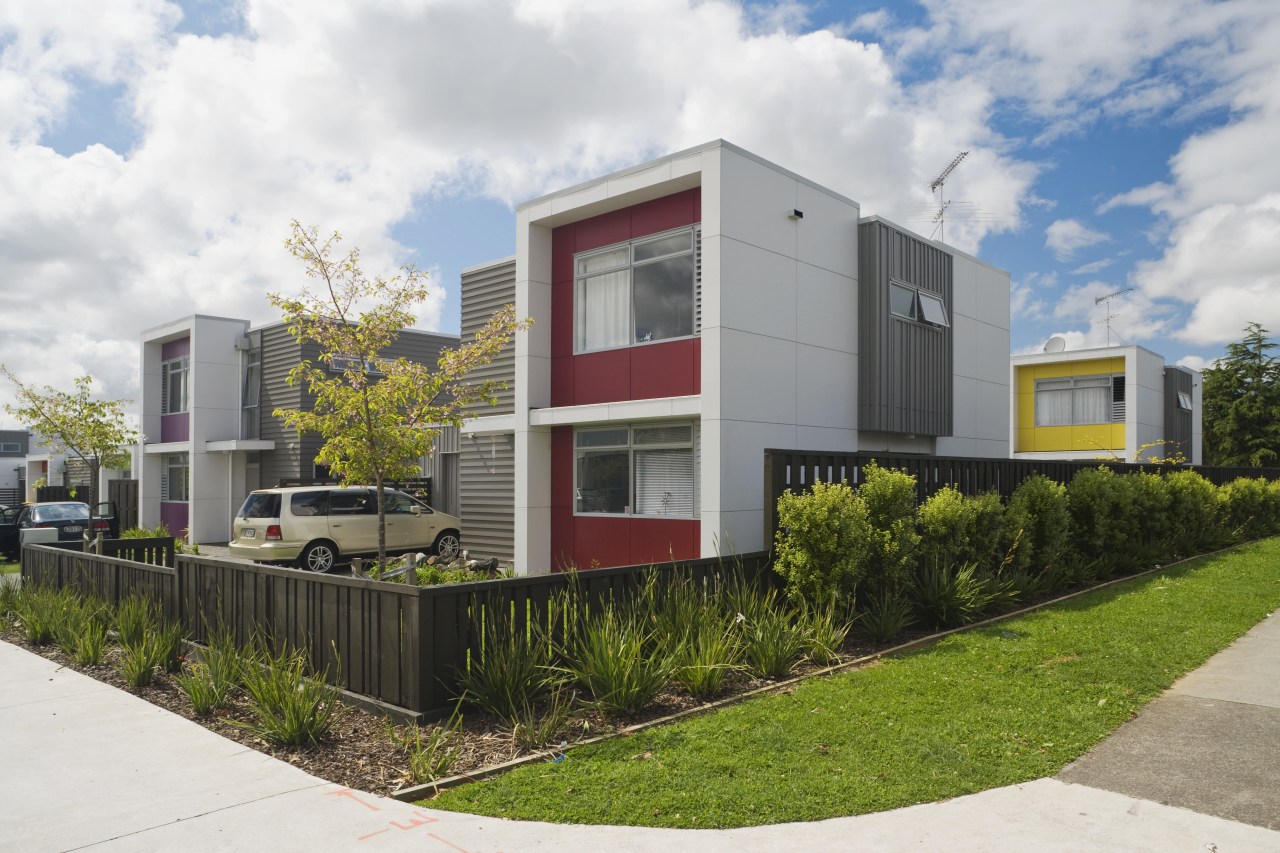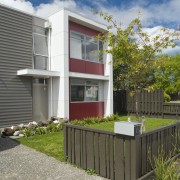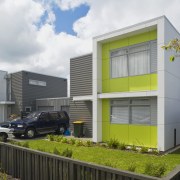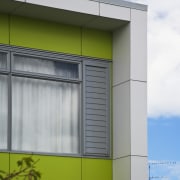In my neighbourhood
Clever design techniques, including a bright colour scheme and a central roadway, promote a sense of community in this Housing New Zealand development

The image often associated with state-owned housing has been turned on its ear with the creation of this new development in Mangere, South Auckland. Using simple, yet effective design techniques, Designgroup Stapleton Architects has created a safe, neighbourhood atmosphere for the Housing New Zealand project.
Established principles of Crime Prevention Through Environmental Design (CPTED) have been applied to the design, says project architect Craig Roberts.
"Site planning is clear and logical, and a hierarchy of spaces public to private is defined by spatial layout, planting and fencing. Entrance and exit routes are clearly articulated. Perhaps the most important aspect of this project was the inclusion of the road, or Homezone, through the centre. This not only allowed the site to become more permeable but also gives the area a more pedestrian-oriented feel, and a sense of community for the homes that surround it."

The accessible, single-storey dwellings are located centrally around the Homezone, while the two-storey family units are positioned around the perimeter of the site to provide an appropriate interface with the existing community. As the single-storey homes were designed for older people and for those with disabilities, the residents are likely to be home during the day. This allows ongoing natural surveillance of the street, an aspect that is furthered by the low fenceline around the homes.
"However, the fences are also important in defining the boundaries between public and private spaces," says Roberts. "Having a defined front yard signals that these spaces are owned by people and cared for. Many of the residents have already begun to personalise these areas."
Designgroup Stapleton had to work to a stringent budget, which prompted a design that uses modular components. To avoid a repetitive look, the facades are enhanced with colours that reflect those seen in Pacific artwork, which relates to the culture of the Manukau City area where it is located.

Garages are placed next to the living areas, allowing them to be used as a secondary living space, which again directs gaze out onto the street and promotes a community feeling. The garages also act as a sound buffer between the houses.
To reduce the need for excessive heating and cooling, concrete slabs are insulated, as are the walls and roofs. Trickle ventilation in the windows helps to reduce dampness, says Roberts.
"We went to some effort to incorporate sustainability principles in the design of the development. Raingardens within the Homezone reduce stormwater run-off. The location is close to several public and community amenities, including schools and preschools, which encourages walking and lowers transport costs for residents."
Credit list
Project
Architect
Civil engineer
Landscaping
Roofing
Joinery
Door supply
Hardware supply
Painting
Electrical
Paving
Project manager
Construction company
Quantity surveyor
Cladding
Excavation/siteworks
Garage doors
Insulation
Tiling
Plumbing and drainage, tapware
Soft landscaping
Fencing
Story by: Camille Butler
Home kitchen bathroom commercial design












